No Blue Memories: The Life of Gwendolyn Brooks played to a packed house Saturday night. The play, commissioned by the Poetry Foundation to commemorate Gwendolyn’s Brooks centennial year, proved both ambitious and highly successful in its effort to express the breath of the poet’s impact on city of Chicago and the country.
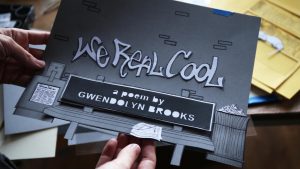
Staged in Harold Washington Library’s spacious Cindy Pritzker Theatre, the meticulous detail marshalled to plan and execute the play was clearly evident from the outset. Flawlessly choreographed, it was live theatre, live musical performance and technologically advanced puppetry all mashed up in an enchanting literary stew that took most of the year to create.
Rarely do you feel such an air of anticipation waiting for a performance to begin. The sense that something special was about to happen pervaded the auditorium. Scanning the audience, its youthfulness and diversity was startling and likely a testament to Brooks’ legacy of emphasizing our shared humanness.
According to co-writer, Eve Ewing, this production is “for people who know her very well, know her work, know her a little, know nothing … wherever you enter, we will meet you and you will walk out having gotten something — hopefully”.
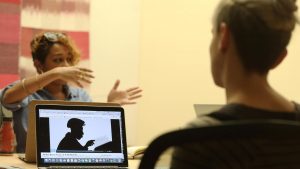
If you know Brooks’ work at all, No Blue Memories is a reminder of her greatness as a person as well as a writer. If you don’t know her at all, the play is an introduction and appreciation for an amazingly gifted individual whose tenacity, humility and self-possession set her apart as much as did her art. Because she made her home here in Chicago, many in the city are still well acquainted with her achievements: Pulitzer Prize winner, Poet Laureate, esteemed consultant to the Library of Congress and the recipient of countless honors recognizing the stature of her work.
As the play demonstrates through song and creative puppetry, she got there through talent and determination. Brooks had something to say to and about the world and began submitting work at an extremely precocious age. Her first poem, Eventide was published when she was 13. By the time she was 16, she had more than 75 poems published. Her poetic gifts knew no limits in range or style.
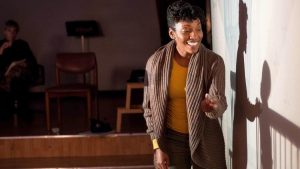
The play’s creators made sure No More Blues imparted a strong flavor of her prolific output but always with the understanding that it is what she was saying that was most important. Her material came from her life living in Bronzeville and looking out of the window of her second-floor apartment. Her understanding of what it took to survive, adapt, and succeed in a place that did not recognize one’s full worth because of the color of her skin came first hand. And she spoke about it with a beauty and eloquence that remains peerless.
Nate Marshall who wrote No More Blues in conjunction with Ms. Ewing, made Brooks’ voice the glue that held the production together. But the action and life of the play came through in the stunning puppetry employed to dramatize her past and explain the resonance of her appeal to the present day.
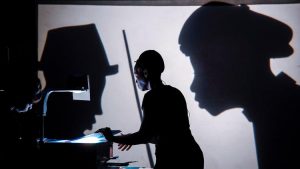
Charged with puppet design, Drew Dir and Liz Breit of Manual Cinema projected silhouettes from the back of the stage onto a large screen at stage center. The effect was one of very clearly watching people conduct the business of day-today life behind a window shade. Highly creative staging allowed live actors to appear in the front of the stage and then disappear in the back to merge or blend into the actions of the puppets. The motion and dynamism of the performance induced pure wonder.
Music opening the performance and threading through its core had the distinct sound of youth and the unmistakable sound of now. Jamila Wood and Ayanna Wood created a mellow score that rang with a jazzy hipness. Both also carried a high profile in the music’s performance as well.
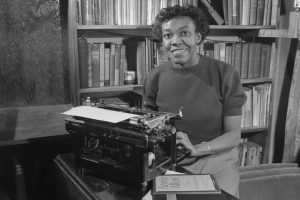
It was the incorporation of so much youthfulness on the stage that added to its relentless vitality. Highlighting Brooks’ influence on the black poets during the late 60’s and the Black Power Movement, a time that witnessed Brooks’ own embrace of a new political consciousness, possessed all of the relevance of this evening’s newscast. The same issues that galvanized the black community 50 years ago unite it today. It was Brooks’ uniquely perceptive interpretation of those times and events, as well as those that preceded and followed them, that showed how her mind was able to dive far below the superficial to find wisdom as well as truth in verse.
No More Blues: The Life of Gwendolyn Brooks
November 17 – November 19
Cindy Pritzker Theater
Harold Washington Library
400 S. State St.
Chicago IL 60605